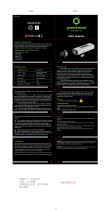
KB 23 / KB 23-UL (E3.1) 02/2019 page 2/87
Contents
1. SAFETY .................................................................................................................. 4
1.1 Legal considerations ........................................................................................................................... 4
1.2 Structure of the safety instructions ...................................................................................................... 4
1.2.1 Signal word panel ...................................................................................................................... 4
1.2.2 Safety alert symbol .................................................................................................................... 5
1.2.3 Pictograms ................................................................................................................................ 5
1.2.4 Word message panel structure ................................................................................................. 6
1.3 Localization / position of safety labels on the chamber ....................................................................... 6
1.4 Type plate ............................................................................................................................................ 7
1.5 General safety instructions on installing and operating the chambers ................................................ 8
1.6 Intended use ...................................................................................................................................... 10
1.7 Operating instructions ....................................................................................................................... 11
1.8 Measures to prevent accidents ......................................................................................................... 11
2. CHAMBER DESCRIPTION .................................................................................. 12
2.1 Chamber overview ............................................................................................................................ 13
2.2 Control panel ..................................................................................................................................... 13
2.3 Chamber rear .................................................................................................................................... 14
3. COMPLETENESS OF DELIVERY, TRANSPORTATION, STORAGE, AND
INSTALLATION .................................................................................................... 14
3.1 Unpacking, and checking equipment and completeness of delivery................................................. 14
3.2 Guidelines for safe lifting and transportation ..................................................................................... 15
3.3 Storage .............................................................................................................................................. 15
3.4 Location of installation and ambient conditions ................................................................................. 16
4. ELECTRICAL CONNECTION .............................................................................. 17
5. START UP ............................................................................................................ 18
5.1 Settings at the RD3 program controller ............................................................................................. 18
5.2 General indications ............................................................................................................................ 19
6. FIXED VALUE ENTRY MODE ............................................................................. 20
7. WEEK PROGRAM EDITOR ................................................................................. 22
7.1 Program table template for Week program Editor ............................................................................ 24
8. PROGRAM EDITOR ............................................................................................. 25
8.1 Selecting between set-point ramp and set-point step ....................................................................... 25
8.1.1 Programming with setting “Ramp” (default setting) ................................................................ 25
8.1.2 Programming with setting “step” ............................................................................................. 27
8.1.3 General notes on programming of temperature transitions .................................................... 28
8.2 Set-point entry for program operation ............................................................................................... 28
8.3 Program table template for Program Editor ...................................................................................... 32
8.4 Deleting a program section ............................................................................................................... 33
9. PROGRAM START LEVEL .................................................................................. 34
10. USER LEVEL ....................................................................................................... 37
11. PROGRAMMING EXAMPLE OF THE WEEK PROGRAM EDITOR .................... 44
11.1 Desired time function ........................................................................................................................ 44
11.2 Proceeding overview ......................................................................................................................... 44
11.3 Proceeding in detail ........................................................................................................................... 45




















